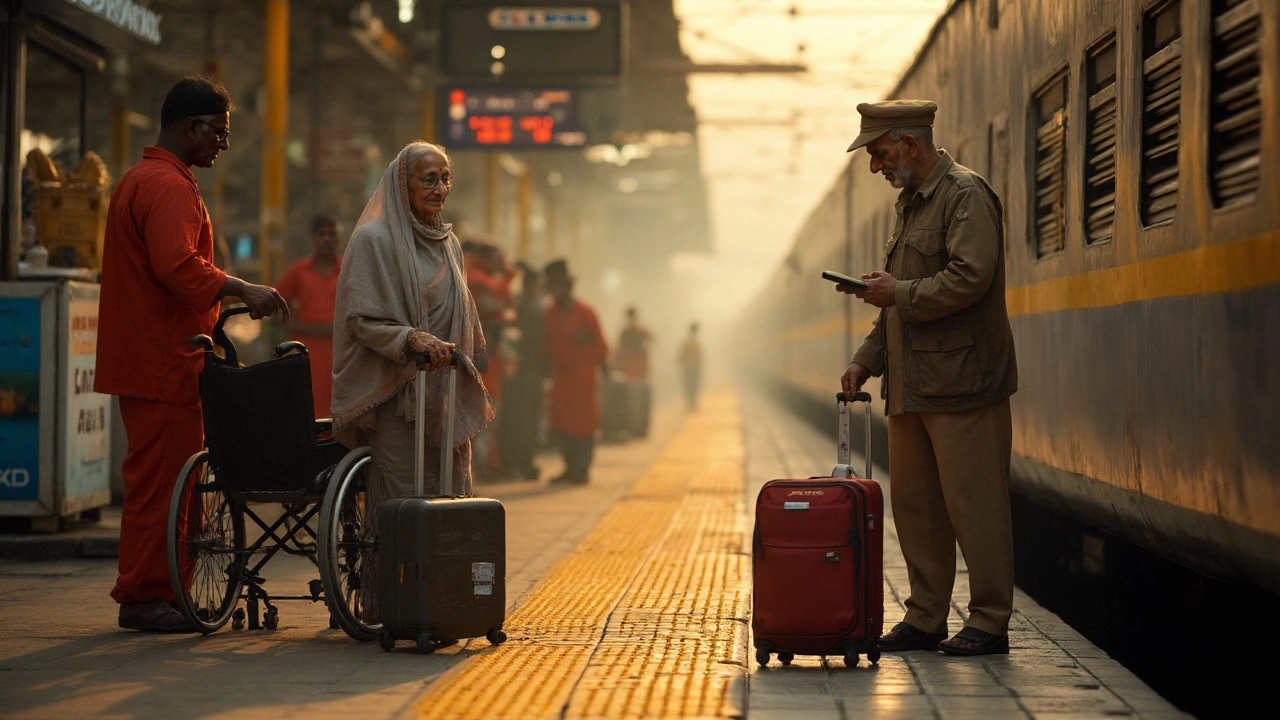
Wondering if trains suit seniors? Get a clear yes/no, safety and comfort tips, step-by-step planning, discounts by region, and a practical checklist for 2025 trips.
When planning train travel for seniors, rail journeys that prioritize older travelers' comfort, safety, and ease of use, you’re looking for a mix of smooth rides, accessible stations, and peace of mind. Also known as senior rail journeys, trips designed with extra legroom, low‑step carriages, and medical support options, this mode of transport can turn long distances into relaxing experiences. Train travel for seniors encompasses several key pieces: the availability of luxury sleeper trains, night‑time cabins that offer beds, private bathrooms, and meal service, the level of senior accessibility, features like wheelchair‑friendly aisles, grab handles, and audible announcements, and the standards of rail safety, protocols that protect passengers from accidents and health risks. Understanding these parts helps you pick routes, book seats, and travel confidently.
First, comfort is the foundation. A senior-friendly carriage usually provides wider seats, extra cushion, and easy‑to‑reach luggage racks. These attributes (wider seats, extra cushion) are the attributes of the entity senior accessibility, and the values are the physical features you feel on board. Next, safety matters. Modern rail operators follow rigorous safety audits, provide on‑board medical kits, and train staff to assist passengers with limited mobility. In other words, rail safety influences train travel for seniors by reducing the risk of falls and health emergencies.
Luxury sleeper trains add a layer of relaxation for long journeys. They typically include private cabins, optional bedding, and onboard dining, turning an overnight trip into a hotel‑like experience. This means train travel for seniors includes luxury sleeper trains, and those sleepers require reservation ahead of time. Booking tips become essential here: use the official railway website or a reputable travel agent, request a lower‑berth or wheelchair‑accessible cabin during reservation, and confirm any special meal requests at least 48 hours before departure.
Booking tips, practical steps like early reservation, seat preference notes, and travel insurance checks can shave hours off your planning process. For seniors, travel insurance that covers medical evacuation and trip interruptions is a smart safety net. Also, consider a refundable ticket option; it offers flexibility if health conditions change.
Scenic routes are another draw for senior travelers who enjoy relaxed sightseeing. Routes such as the Canadian Pacific’s coastal line, the Indian Palace on Wheels, or the US Amtrak’s California Zephyr provide large‑window cars and narrated tours. When you pair scenic views with senior accessibility features, the overall experience becomes both engaging and manageable.
Finally, station amenities play a big role. Look for stations that offer elevators, ramps, accessible restrooms, and quiet waiting areas. Many major hubs now provide dedicated senior lounges where you can rest before boarding. This completes the semantic chain: senior accessibility requires station amenities, which in turn support safe and comfortable train travel for seniors.
All these pieces—comfort seats, safety protocols, luxury sleepers, savvy booking tips, and accessible stations—create a cohesive picture of what older travelers can expect on the rails. Below you’ll find a curated list of articles that dive deeper into each of these areas, from detailed reviews of luxury sleeper options to step‑by‑step guides on securing the best senior‑friendly tickets. Explore the collection to plan a rail adventure that feels as easy as a stroll down the platform.

Wondering if trains suit seniors? Get a clear yes/no, safety and comfort tips, step-by-step planning, discounts by region, and a practical checklist for 2025 trips.